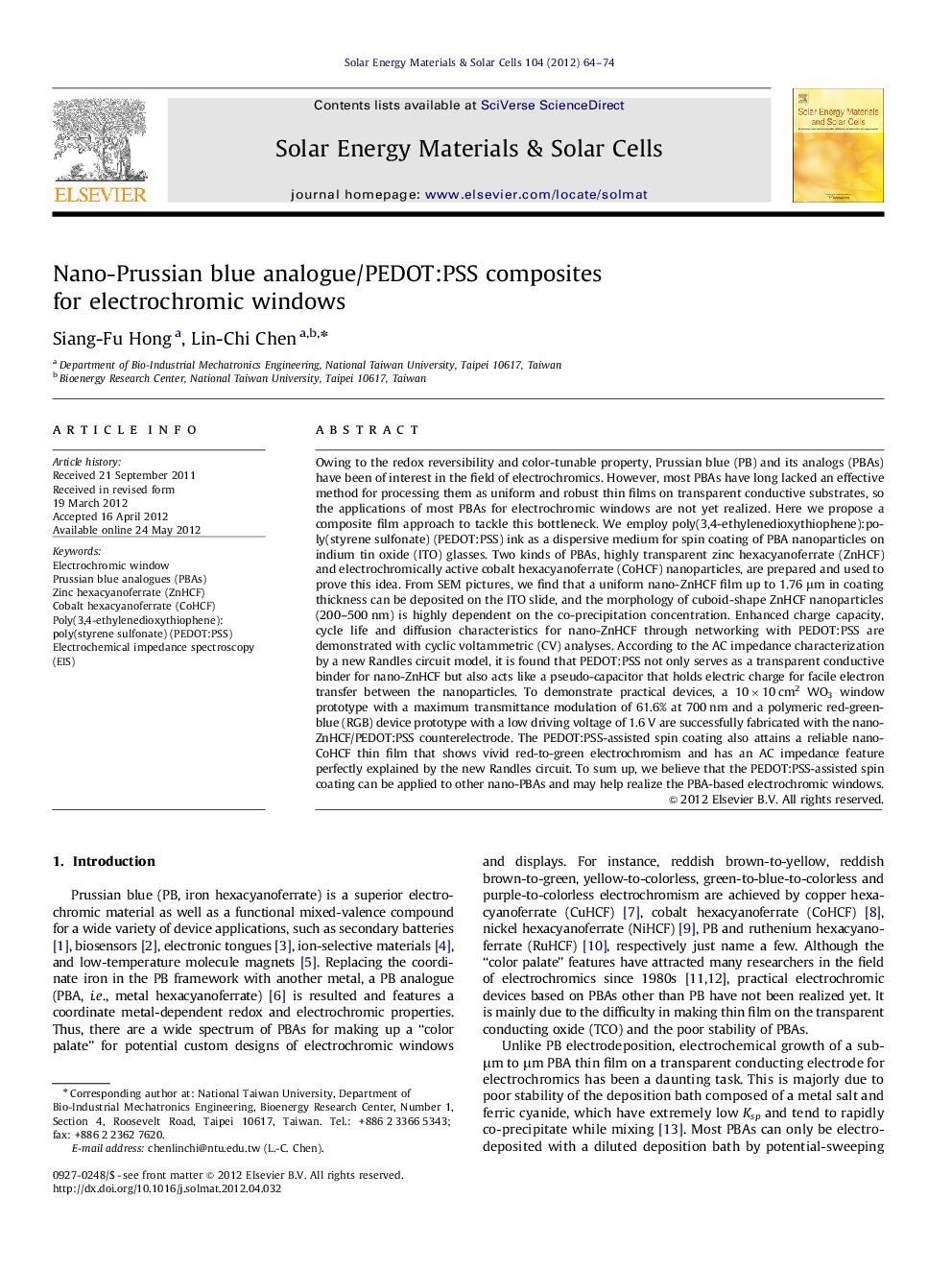| کد مقاله | کد نشریه | سال انتشار | مقاله انگلیسی | نسخه تمام متن |
|---|---|---|---|---|
| 78461 | 49332 | 2012 | 11 صفحه PDF | دانلود رایگان |

Owing to the redox reversibility and color-tunable property, Prussian blue (PB) and its analogs (PBAs) have been of interest in the field of electrochromics. However, most PBAs have long lacked an effective method for processing them as uniform and robust thin films on transparent conductive substrates, so the applications of most PBAs for electrochromic windows are not yet realized. Here we propose a composite film approach to tackle this bottleneck. We employ poly(3,4-ethylenedioxythiophene):poly(styrene sulfonate) (PEDOT:PSS) ink as a dispersive medium for spin coating of PBA nanoparticles on indium tin oxide (ITO) glasses. Two kinds of PBAs, highly transparent zinc hexacyanoferrate (ZnHCF) and electrochromically active cobalt hexacyanoferrate (CoHCF) nanoparticles, are prepared and used to prove this idea. From SEM pictures, we find that a uniform nano-ZnHCF film up to 1.76 μm in coating thickness can be deposited on the ITO slide, and the morphology of cuboid-shape ZnHCF nanoparticles (200–500 nm) is highly dependent on the co-precipitation concentration. Enhanced charge capacity, cycle life and diffusion characteristics for nano-ZnHCF through networking with PEDOT:PSS are demonstrated with cyclic voltammetric (CV) analyses. According to the AC impedance characterization by a new Randles circuit model, it is found that PEDOT:PSS not only serves as a transparent conductive binder for nano-ZnHCF but also acts like a pseudo-capacitor that holds electric charge for facile electron transfer between the nanoparticles. To demonstrate practical devices, a 10×10 cm2 WO3 window prototype with a maximum transmittance modulation of 61.6% at 700 nm and a polymeric red-green-blue (RGB) device prototype with a low driving voltage of 1.6 V are successfully fabricated with the nano-ZnHCF/PEDOT:PSS counterelectrode. The PEDOT:PSS-assisted spin coating also attains a reliable nano-CoHCF thin film that shows vivid red-to-green electrochromism and has an AC impedance feature perfectly explained by the new Randles circuit. To sum up, we believe that the PEDOT:PSS-assisted spin coating can be applied to other nano-PBAs and may help realize the PBA-based electrochromic windows.
► PEDOT:PSS ink-assisted spin coating of PBA nanoparticles on ITO is demonstrated.
► Colorless ZnHCF and electrochromic CoHCF nanoparticles are used to prove the idea.
► A new EIS model shows the facile electron transfer between PEDOT:PSS and nano-PBA.
► A 10×10 cm2 WO3 electrochromic window prototype serves as one application example.
► A polymeric red-green-blue electrochromic device prototype is another application.
Journal: Solar Energy Materials and Solar Cells - Volume 104, September 2012, Pages 64–74